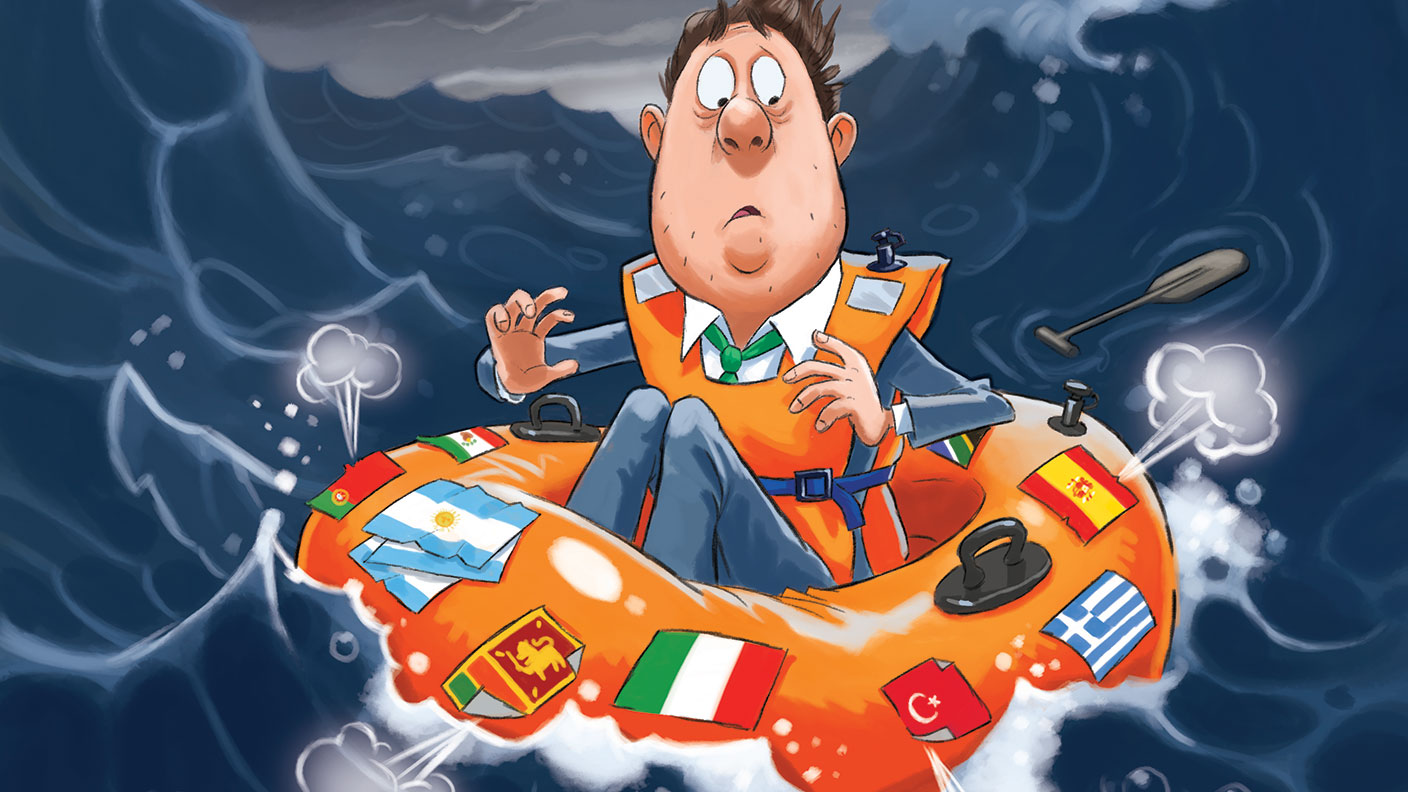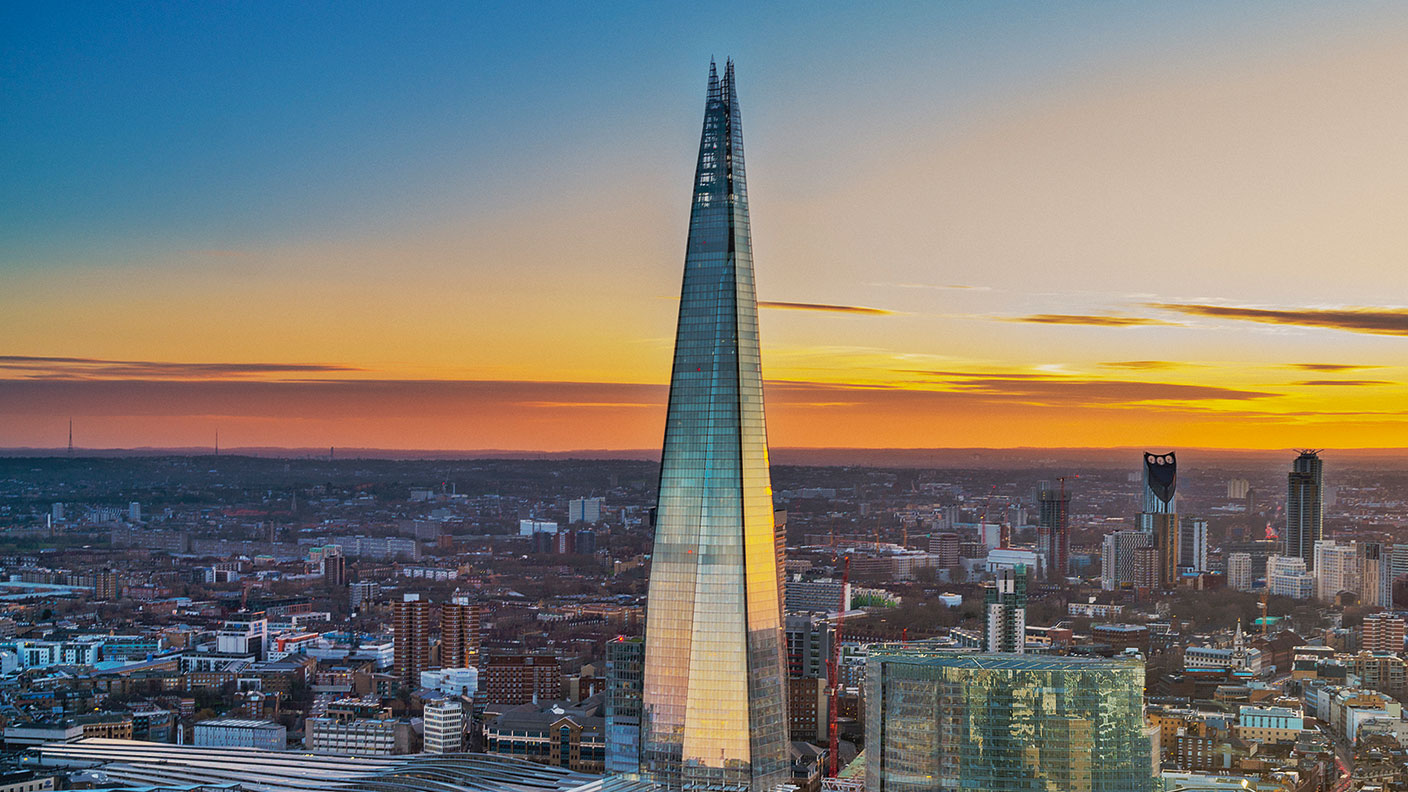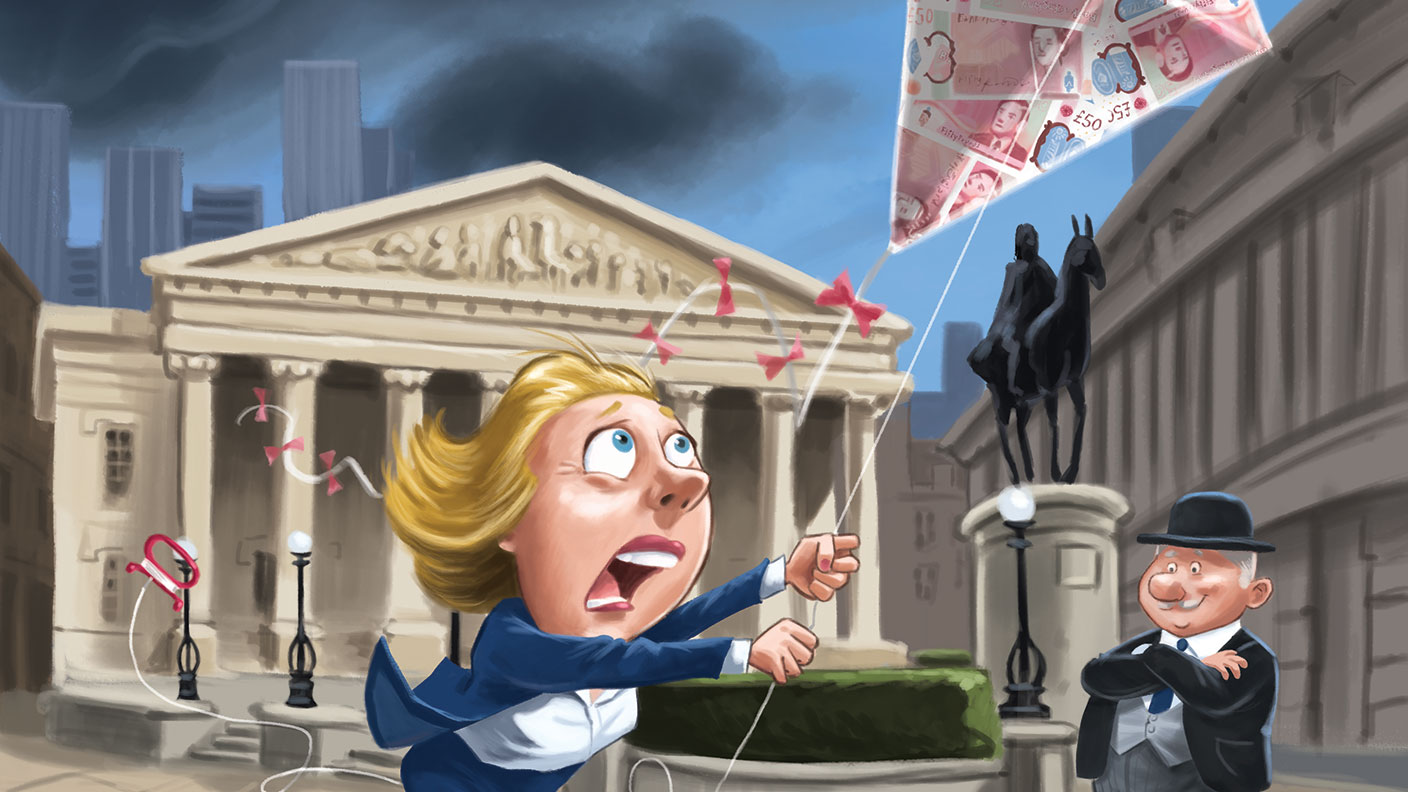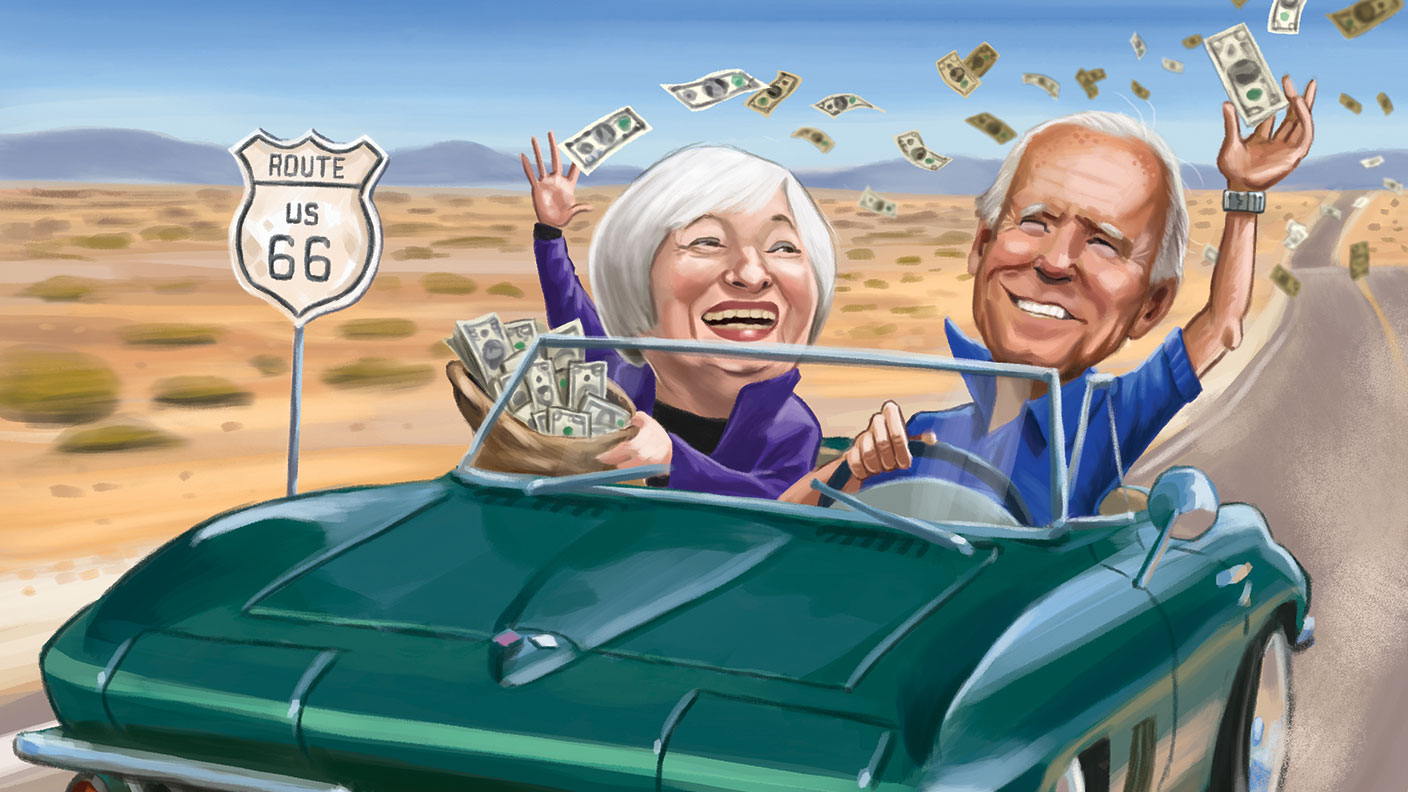The slump in emerging markets is a great buying opportunity
Fears of another 1990s-style crisis are overblown: developing countries are now more resilient to external threats and less dependent on rich countries’ business cycles, says Rupert Foster. They also look cheap.


This year investors have had a stark reminder that emerging markets are risky assets. After climbing by around 50% throughout 2016 and 2017, the benchmark MSCI Emerging Markets index has slipped by over 10%, while some key emerging markets have fallen dramatically. Equity indices in the Philippines, Indonesia and China are down more than 20%. The Argentine peso has slumped by a third against the dollar. Emerging-market debt has sold off too. Factor in the Trump administration's protectionism, a headache for traditionally trade-dependent developing countries, and you can see why some investors fear we could see a series of economies blow up in a repeat of the Asian Crisis of 1997.
But the doom-mongers are wrong. The gloomy atmosphere has deflected attention from emerging markets' growing resilience to external threats, a result of structural improvements within their economies over the past two decades and their growing independence, or "decoupling", from the industrialised world's business cycle.
We are on the cusp of a new world order where developed markets don't dictate performance in emerging markets; instead, emerging-market economies will power the world economy. Combined with their young populations and increasingly solid domestic economies, this means they deserve a place in your portfolio. And the good news is that they are now among the few areas of the global equity market offering value at a time when pretty much everything is overpriced. They are a compelling long-term buy.
MoneyWeek
Subscribe to MoneyWeek today and get your first six magazine issues absolutely FREE

Sign up to Money Morning
Don't miss the latest investment and personal finances news, market analysis, plus money-saving tips with our free twice-daily newsletter
Don't miss the latest investment and personal finances news, market analysis, plus money-saving tips with our free twice-daily newsletter
The exodus from emerging markets
Since April this year global emerging-market (EM)equity funds have seen outflows worth around $14bn as money has fled riskier assets and headed back to the developed world, especially the US. Global EM equity funds total $1trn in size but are still dwarfed by US equity funds with over $5trn in them. Thus a 5% increase in US equity funds at the expense of EM funds would see a 25% fall in EM fund size, leading to dramatic falls in EM stockmarkets.
In this sell-off, falls in especially risky EM high-yield debt have compounded risk aversion. Zero interest rates and quantitative easing (or money printing) by central banks have triggered a global hunt for yield in recent years. EM high-yield bonds became even more attractive because they were accessible through a simple exchange-traded fund (ETF) structure. There are only about $40bn of high-yield EM bond ETFs, but the ructions in this new sector have reinforced general nervousness about EMs.
The US-China trade war
The immediate worry for emerging markets, which are usually more export-dependent than rich countries, is the fallout from a trade war. As in many areas of geopolitics, Trump has cut a swathe through global trade policy with China the main target of America's ire. The Trump administration recently applied tariffs to about $30bn-$40bn of Chinese goods. Now it has started the legislative process for further levies on $200bn of Chinese goods and the president has warned that this could in time be raised to the full $500bn of Chinese exports unless the Chinese government starts playing ball.
The Chinese, after initially reacting in a conciliatory manner, have hardened their stance inthe face of Trump's aggressive rhetoric. They have decided to dig in and be prepared for a long war. Bear in mind that President Xi Jinping need not fear elections, so the government will be able to insist that the population make sacrifices to allow China to keep fighting US policies.
In the meantime, investors' key concern is the potential knock-on effect on the region. Malaysia, Singapore, South Korea and Taiwan are some of the world's most trade-dependent economies, and to complicate matters further they play a key part in regional supply chains, often shipping goods to China that are then used to make products re-exported to America. These intermediate goods range from semiconductors and mobile-phone screens to car parts. In Taiwan's case, component exports comprise almost 2% of GDP. On average, around half of Asia's exports are intermediate goods. Until the full extent of tariffs and restrictions is clear, it will be impossible to gauge how far growth could be affected, but given the scope for trouble to spread far and wide, you can see why investors are jittery.
All sound and fury
The trade dispute has gravely damaged sentiment, but so far the actual economic effect has been minimal. Trump's forthcoming tariffs on $200bn of Chinese goods have been set at 10% (although he has threatened to raise them to 25%) and China's main policy reaction to the trade war has been a managed 10% devaluation of the Chinese renminbi to the US dollar, which essentially means that the Chinese products about to incur 10% levies are actually no more expensive for US consumers.
Trump may be secretly pleased about this: there are good reasons to think that this trade war is about political tactics, not economic strategy. The odds are that Trump is using his trade war as a rallying call before November's mid-term elections in the US. It is vital that Trump maintains control of two houses of Congress or his presidency will hit the legislative quagmire that Obama's did. Trump has the additional incentive to work hard for a Republican victory in November, given that a Republican-controlled Congress is less likely to impeach him whenever Robert Mueller delivers his final verdict on Trump's relationship with Russia. Thus it would seem likely that Trump will continue to push hard well into the autumn and if he can legitimately claim that he has achieved a victory against the Chinese before November, all the better. In the end, appearing to keep protectionist promises and achieving a public-relations victory is all that is required; a real victory in a trade war is extremely tough to achieve. A trench warfare-style stalemate with China has always been the most likely outcome.
Dollar doldrums
Nonetheless, one of the key outcomes of Trump's trade war renminbi weakness has intensified a key element of the market's new-found nervousness on emerging markets: dollar strength. Dollar strength raises fears that emerging economies, historically reliant on dollar liquidity flows either through debt or equity, could begin struggling to attract further greenbacks and service their dollar-denominated debt. If bearishness in emerging markets spreads, and US interest rates are set to rise, making US assets more appealing, global investors tend to head back to the world's biggest economy.
This was the origin of the Asian crisis in 1997. Most of the Association of South Eastern Nations' (Asean) tiger economies had borrowed aggressively in US dollars in the five years before 1997 and didn't have enough foreign-exchange reserves to service pricier debt and prop up their currencies when they began to slide. So as investors fled, there was nothing to stop a collapse of regional currencies, which made their debt burdens ever bigger. The vicious circle was complete.
History won't repeat itself
Where are we this time? Are emerging economies dependent on dollar-denominated debt uncovered by FX reserves? Dollar debt as a percentage of GDP has fallen in the emerging world since the crisis. In Thailand and India, for instance, the current figures are around 14% and 18% respectively. China is an outlier with its acceleration in debt. However, it only has $1trn of dollar-denominated debt, as opposed to $3trn of FX reserves, and thus appears to be in control of its debt mountain for now. Foreign-exchange reserves have risen sharply across the region. In Korea they are worth 25% of GDP, compared with less than 5% in 1997. Thailand's figure has doubled to around 40%. Dollar strength triggers a Pavlovian reaction among global investors and they rush back into the US, haunted by memories of the Asian crisis. But the fundamentals have vastly improved, so there is no objective reason to do so.
Domestic economies gather momentum
The unjustified panic presents a wonderful new buying opportunity for long-term investors in emerging markets especially as these countries are becoming so powerful that their business cycles will come to depend less and less on industrialised countries. Emerging Asia is now the driver of much of the growth in the whole world, with China's growth in annual consumption in 2018 50% higher than the contribution from the US (see table). In 2019 Asian household spending, worth $12.9bn this year, will finally eclipse America's. This means that the core of the emerging-market investment case going forward will be about domestic demand and not the need to cater to the needs of US consumers. Thus if the emerging Asian economies, and China in particular, can keep their own consumption going they need no longer worry about the interest-rate cycle in the US.
| Country/region | 2017 GDP($trn) | Private consumption ($trn) | 2018 growth in consumption ($bn) | % of world consumption growth |
| US | 20.4 | 13.9 | 277.4 | 20.9 |
| EU | 19.7 | 10.8 | 162.5 | 12.2 |
| China | 13.9 | 5.5 | 409.5 | 30.8 |
| India | 2.8 | 1.7 | 129.8 | 9.8 |
| Emerging Asia | 19.5 | 8.6 | 611.4 | 46.0 |
| Total Asia | 27.7 | 12.9 | 688.5 | 51.8 |
This dwindling dependence on the global business cycle marks a fundamental shift in the global economy that shows no sign of going into reverse. That is due to Asia's superb demographics. Indeed, 60% of global millennials (aged 18-36) are in emerging Asia and 86% are in the emerging world, leaving a paltry14% in the developed world. Regional household spending is set to expand for years to come as the labour forces of the future grow richer and splash out on consumer goods.
Companies are leaner and meaner
In addition to these known demographic and consumption-driven benefits, emerging-market companies have upped their game. Gone are the days when Asian companies were awash with debt. Net debt to equity ratios in Asia are now on average 17%, as opposed to US corporations' average of 62%. Asian firms have become much better at converting their earnings into cash, which helps explain why returning money to shareholders through dividends has now become a centrepiece of most Asian corporate strategies. In short, the quality of emerging-world corporations, particularly those in Asia, is immeasurably better than it was in 1997.
A rare pocket of value
Lastly, while developed-world equities get ever more expensive, emerging-world equities represent a rare pocket of value in global markets. Developed markets are on a cyclically adjusted price/earnings (Cape) ratio of 25, compared with emerging markets' 16. Interestingly, Jeremy Grantham of asset management group GMO, who dodged both the dotcom and US housing bubbles, and advised a punt on US stocks at the bottom of the market in 2009, said recently that emerging markets are the only asset class now cheap enough to produce healthy long-term returns. He notes that the Cape soared to 35 in 2007. That gives you some idea of the scope for emerging markets to appreciate once they come back into favour.
Emerging markets look likely to remain volatile until the autumn given the political backdrop, but calmer markets should then increasingly begin to perceive the benefit of that fundamental shift: the emerging world shaking off developed world economics and fears. In the not too distant future the historic "flight to safety" of developed-market investors every time there is bad news in the developing world should morph into a new enduring investment theme within global portfolios: the emerging world powering global growth.
Cashing in on Asia's structural growth story
The cheapest way to play the long-term Asia and emerging-markets story is with an exchange-traded fund (ETF) The larger ones will be the most liquid. One example is the Lyxor MSCI AC Asia Pacific ex-Japan ETF (LSE: AEJ).
In terms of Asian funds Stewart Investors Asia Pacific Leaders is made up of appealing blue-chips, and unlike the ETFs, which tend to be skewed towards China, is weighted towards India and Taiwan.
Baillie Gifford's Emerging Markets Growth and Pacific funds target fast growers, with an emphasis on online (and usually highly priced) stocks. The funds' top four markets are China, India, South Korea and Taiwan.
Sticking with the growth theme, MoneyWeek has long been keen on two Asia-focused smaller company investment trusts, the Scottish Oriental Smaller Companies (LSE: SST) and Aberdeen Asian Smaller Companies (LSE: AAS).The latter's top three markets are currently Thailand, Malaysia and Hong Kong. Scottish Oriental's are India, Singapore and Taiwan.
The online giants
The internet sector is particularly appealing in Asia. Owing to a dearth of high-quality brands and businesses in the region, new up-and-coming online businesses are in a position to grab a larger share of the overall pie more quickly than elsewhere.
This is clearly illustrated in China by the dominance of Alibaba (NYSE: BABA) and Tencent (Hong Kong: 700).These two companies remain the highest-quality long-term investments in China as they dominate the key e-commerce and social-media arenas in the Middle Kingdom. They also have significant control of the online payments industry, along with significant exposure to Chinese consumers generally.

The main potential risk in these businesses is that their founders fall foul of Chinese politics and the state takes a stake in their businesses. However, this appears unlikely for now as the Chinese government needs these two companies to spearhead the spread of Chinese economic influence across the rest of Asia and into Europe.
For instance, Alibaba and Tencent's ecommerce affiliate JD.com (Nasdaq: JD) are currently opening logistics centres in Europe that will allow these two firms to challenge Amazon in Europe in the next two to three years. Walmart has a 10% stake in JD.com. Alibaba and Tencent's expansion into the rest of Asia is also promising. Tencent's affiliate Sea Ltd. (NYSE: SE) is one of three dominant players (the other two are owned by Alibaba) in the e-commerce, gaming and online payments industries of the Association of Southeast Asian Nations (Asean). The Asean e-commerce space is years behind China, but is dominated by these three firms. So in the long term much of the estimated $200bn Asean e-commerce market is likely to fall to them. Tencent and Alibaba are the top two holdings of the ETF and the Baillie Gifford funds.
Get the latest financial news, insights and expert analysis from our award-winning MoneyWeek team, to help you understand what really matters when it comes to your finances.
Rupert is an investment strategist and adviser at J & C Foster, providing Asian, Consumer and Global Equities Strategy advice to a number of family offices and portfolio management organisations. He writes on Asia and Global Macroeconomics for a number of investment publications including MoneyWeek and HL Investment Times.
-
 My 6.5% Nationwide regular saver is due to mature - what are my options?
My 6.5% Nationwide regular saver is due to mature - what are my options?Nationwide’s 6.5% regular saver is due to mature for those who opened one last year. Here is what you can do now to make the most of your savings
-
 Leading European companies offer long-term growth
Leading European companies offer long-term growthOpinion Alexander Darwall, lead portfolio manager, European Opportunities Trust, picks three European companies where he'd put his money
-
 Governments will sink in a world drowning in debt
Governments will sink in a world drowning in debtCover Story Rising interest rates and soaring inflation will leave many governments with unsustainable debts. Get set for a wave of sovereign defaults, says Jonathan Compton.
-
 Why Australia’s luck is set to run out
Why Australia’s luck is set to run outCover Story A low-quality election campaign in Australia has produced a government with no clear strategy. That’s bad news in an increasingly difficult geopolitical environment, says Philip Pilkington
-
 Why new technology is the future of the construction industry
Why new technology is the future of the construction industryCover Story The construction industry faces many challenges. New technologies from augmented reality and digitisation to exoskeletons and robotics can help solve them. Matthew Partridge reports.
-
 UBI which was once unthinkable is being rolled out around the world. What's going on?
UBI which was once unthinkable is being rolled out around the world. What's going on?Cover Story Universal basic income, the idea that everyone should be paid a liveable income by the state, no strings attached, was once for the birds. Now it seems it’s on the brink of being rolled out, says Stuart Watkins.
-
 Inflation is here to stay: it’s time to protect your portfolio
Inflation is here to stay: it’s time to protect your portfolioCover Story Unlike in 2008, widespread money printing and government spending are pushing up prices. Central banks can’t raise interest rates because the world can’t afford it, says John Stepek. Here’s what happens next
-
 Will Biden’s stimulus package fuel global inflation – and how can you protect your wealth?
Will Biden’s stimulus package fuel global inflation – and how can you protect your wealth?Cover Story Joe Biden’s latest stimulus package threatens to fuel inflation around the globe. What should investors do?
-
 What the race for the White House means for your money
What the race for the White House means for your moneyCover Story American voters are about to decide whether Donald Trump or Joe Biden will take the oath of office on 20 January. Matthew Partridge explains how various election scenarios could affect your portfolio.
-
 What’s worse: monopoly power or government intervention?
What’s worse: monopoly power or government intervention?Cover Story Politicians of all stripes increasingly agree with Karl Marx on one point – that monopolies are an inevitable consequence of free-market capitalism, and must be broken up. Are they right? Stuart Watkins isn’t so sure.
